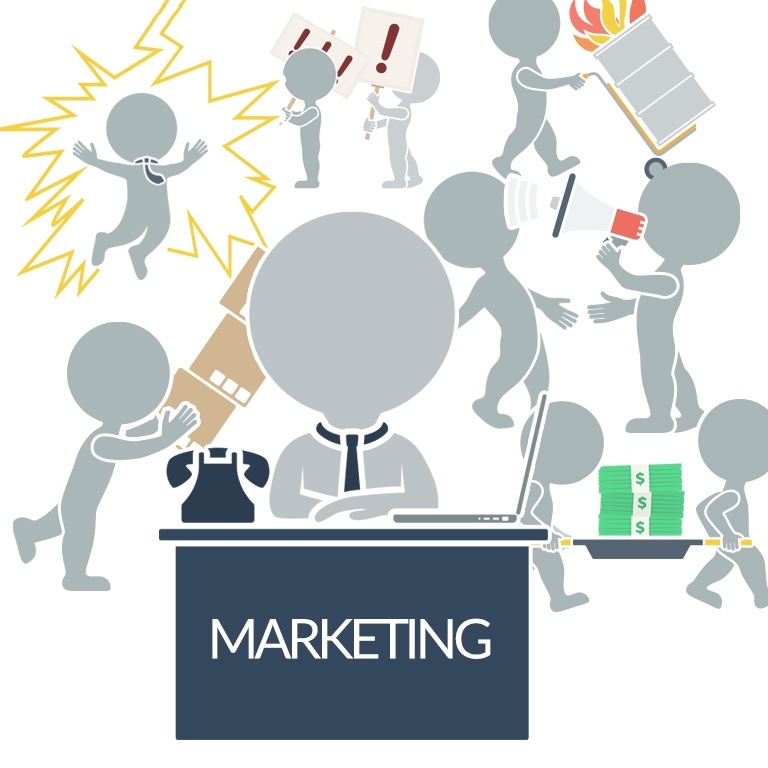Eventbrite, an online ticketing service provider, has come a long way since it launched in 2006 but the lack of reserved seating functionality has been a critical drawback that kept many nonprofit performing arts organizations from considering it as a serious ticketing solution. But all that changed on March 5, 2014 when Eventbrite launched a new reserved seating feature that, simply put, is pretty damn slick.
 Here’s Eventbrite’s self-described overview of features:
Here’s Eventbrite’s self-described overview of features:
- Easily create a realistic seat map in minutes.
- Fill the best seats first with ‘best available’ seating
- Set optimal pricing for each seat in the house
- Save and crowd-source seat maps by other organizers
- Integrate with other Eventbrite tools to set up discounts, access sales data and reports at any time, and much more
If that last point makes it sound like they are moving out of the ticketing-solution-only space and into full blown CRM (customer relationship solution) territory, then you get a gold star for observation prowess.
The seat map creator is not only easy to use, but far more powerful than you might imagine while the print and digital tickets are as streamlined and user friendly as their traditional counterparts.
http://vimeo.com/user8415940/introducing-reserved-seating
Oh, and did I mention the seat map designer and related services are free; there isn’t even a one off set up fee. Instead, Eventbrite opted to apply its standard pricing structure which only charges nonprofit users 5%+$0.99 per sold ticket (2% is the Eventbrite charge and 3% is the credit card processing fee). If your org isn’t a 501(c)3, you can add an additional .5% to that fee formula.
Fortunately, Eventbrite provides the option of rolling the fee into the ticket price or show it as a separate line item charge.
The new reserved seating offering incorporates all of their traditional features such as selling tickets at the door via a card swipe device and an iPad as well as ticket scanning via iOS or Android powered Smartphone. Granted, it would be nice if they could release an Android version of the at-the-door sale app as well as offer both options for Windows 8 devices, but this is a comparatively minor (and hopefully temporary) gripe.
Why Eventbrite’s reserved seating feature isn’t making huge waves throughout the nonprofit performing arts field is beyond me but then again, using Eventbrite for ticketing has been seen by many in the field the same way they viewed WordPress. Remember when people used to think it was only for publishing blogs? Ha!
Moreover, if Eventbrite doesn’t begin showing up at all the major performing arts org conferences and conventions, they’re missing out as our field has needed a solution like this for many, many years.
If your group looking for a new ticketing provider, do yourself a big favor and take a close look at Eventbrite.
Is anyone out there using Eventbrite’s reserved seating functionality? If so, I’d love to hear about your experience so thank you in advance for taking a moment to get in touch or leave a comment.



Interesting read – thanks. An issue of course is that almost everyone out there needs a true donor database just as badly. Most of the integrated systems that I’ve seen to a poor job at either ticketing or fundraising. If a company like Bloomerang, with an excellent web based CRM, were to develop integration with an offering like this one they would achieve rapid market domination.
I was hoping someone would make that point and I agree, most ticketing/CRM are either wildly expensive and therefore don’t offer a reasonable ROI or offer solutions that trade functionality on one side of the fence for shortcoming on the other.
I haven’t fully investigated the connectivity yet, but there are turn-key solutions that offer exactly what you’ve described via Zapier. I have several clients currently using zapier and it has been a very stable provider. I don’t see Bloomerang listed as a provider that integrates with Eventbrite via Zapier but it doesn’t mean it can’t be done. What does jump out at me are ready-made solutions between Eventbrite and Salesforce, MySQL, SugarCRM, and most of the mainstream commercial CRM providers from this list. Another potential bit of key flexibility here is something like Zapier makes it easier for groups to mix and match which providers they want to use and even change them up down the road with less hassle and cost than would otherwise exist.
Good news that these types of offerings are giving the mammoth ticketing systems some competition. The old school ‘all-inclusive’ systems are typically cost prohibitive for smaller orgs and development resource heavy for larger orgs. Not to mention that they’re mostly slow to change and very antiquated.
Glad you mention Zapier in your comment Drew. I’ve been seeing a good promise for the future with all these unique tools that do one thing well, rather than all things poorly.
A combination of tools (CRM, Email Marketing, CMS, Merchant Account, E-Commerce etc.) and the ability to easily integrate and connect them is becoming much more attainable for small orgs.
I’ve set up some smaller integrations like that (although building/integrating CRM is the next thing I want to tackle), and it cost maybe a couple of hundred dollars (not counting my time), but brings in thousands of dollars that are now more trackable and manageable and easier for the customer.
That’s my thinking exactly Marc; one of the real hurdles to get past will be developing a tight enough integration between multiple providers so the user doesn’t have to bounce in and out of too many different admin panels; or at the very least, make the process as seamless as possible. Ideally, creating an integrated dashboard for as much of the data as possible would be the way to go.
What I’m curious to hear about from marketers and box office pros is which elements, specifically, from their CRM and ticketing do they consider critical as it relates to syncing data, reporting, etc.
This solution doesn’t allow ticket-buyers to choose their own seats. There’s no chance of it being a game-changer until they can address that need.
Thank you, I’ve been waiting for someone to point that out. As of now, it does and it doesn’t. Users have the ability to assign specific seats, which is a solution for making sure subscribers get their preferred seats, otherwise they do work on a best available seating structure, which functions via a number of user defined variables including making sections with very few seat options (although that’s not a terribly practical solution).
At the same time, the capacity for letting the buyer select an individual seat is there, it just needs to be implemented and I would be surprised if it isn’t a standard feature by the fall; to that end, I strongly recommend contacting them and pushing (hard) to bring this about sooner than later: You can call them 1-888-810-2063, contact via email at http://www.eventbrite.com/contact-us, or tweet @eventbrite. The more potential market they know exists, the better.
This is exciting, but the more I think about this, the more questions I have about its value to arts institutions. This seems to be aimed primarily at one off events. Whereas most performing arts organizations are trying to foster a longer term relationship with their patrons. A lot of the comments have been focused on the backend, but what about the user experience? For large or small organizations creating a seamless user experience is important. What levels of website integration does Eventbrite offer? Can you up-sell drinks or parking, ask for a donation, or offer personalized content, messaging, etc based on information stored in the CRM. These trade offs may be worth while to a smaller company, but Eventbrite would have to come a long way, even with third-party integration, to replace a system like Tessitura or Raiser’s Edge. In the meantime, I hope this continues to instigate conversation in the ticketing world.
Good questions, I’m far from an expert but I do know that Eventbrite’s on-site sales app (much like the app/card swipe device from Square) provides the ability to sell non-ticket items. And some quick Help searches at EB turned up the following:
*donations: yes
*additional merch (including parking): yes
I’d be curious to know what any users have to say about those features and how they integrate with the customer records.
I also agree that it is far from a tessitura competitor but this latest development is not just a step in the right direction but also demonstrates that the company is committed to evolving in that direction. Add to that their ability to raise R&D capital and develop at a much faster rate than traditional providers and you have something that will be very interesting to watch.
Agreed.
Your are obviously paid to write this.
Sorry to disappoint but that isn’t the case. Set aside the fact that I don’t publish paid posts nor do I participate in junkets, I would like to think that if I did sell out, it would be for quite a bit more than whatever a ticketing provider would pay for a one-off post. 🙂
The only ticketing organization that seems to cater to the smaller organization with the features that are needed for a non-profit is Arts People (Ticket Turtle). It is very affordable with the database features for keeping track of donations, memberships, subscriptions and more. They are a bunch of arts people that have sat down to design their own online software. After a fairly extensive look since I work with mostly small to medium sized organizations, this is my pick out of the various offerings. https://www.arts-people.com/
PS I am not paid to spread the word. I was conducting research for my clients, and this is what I found to be true.